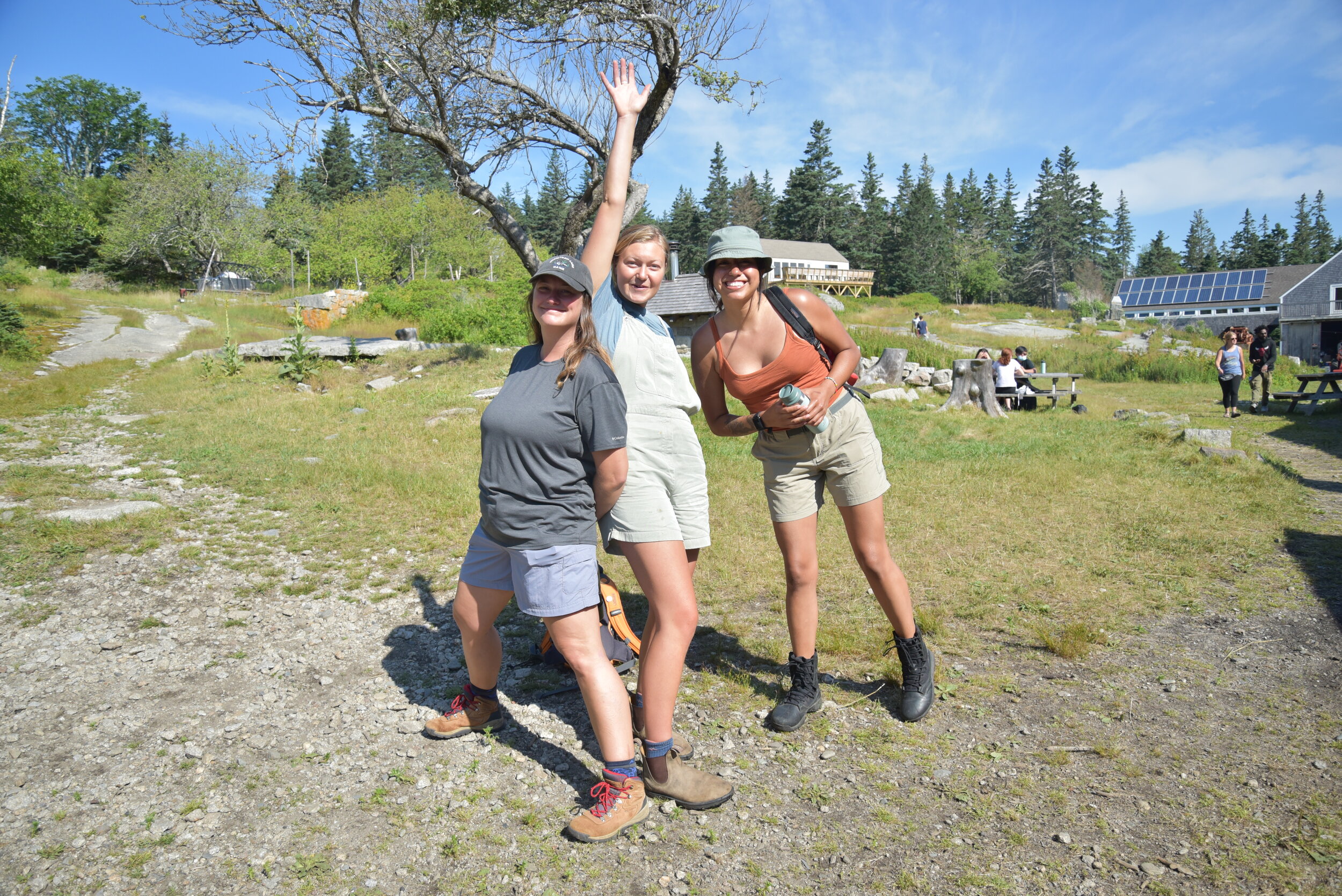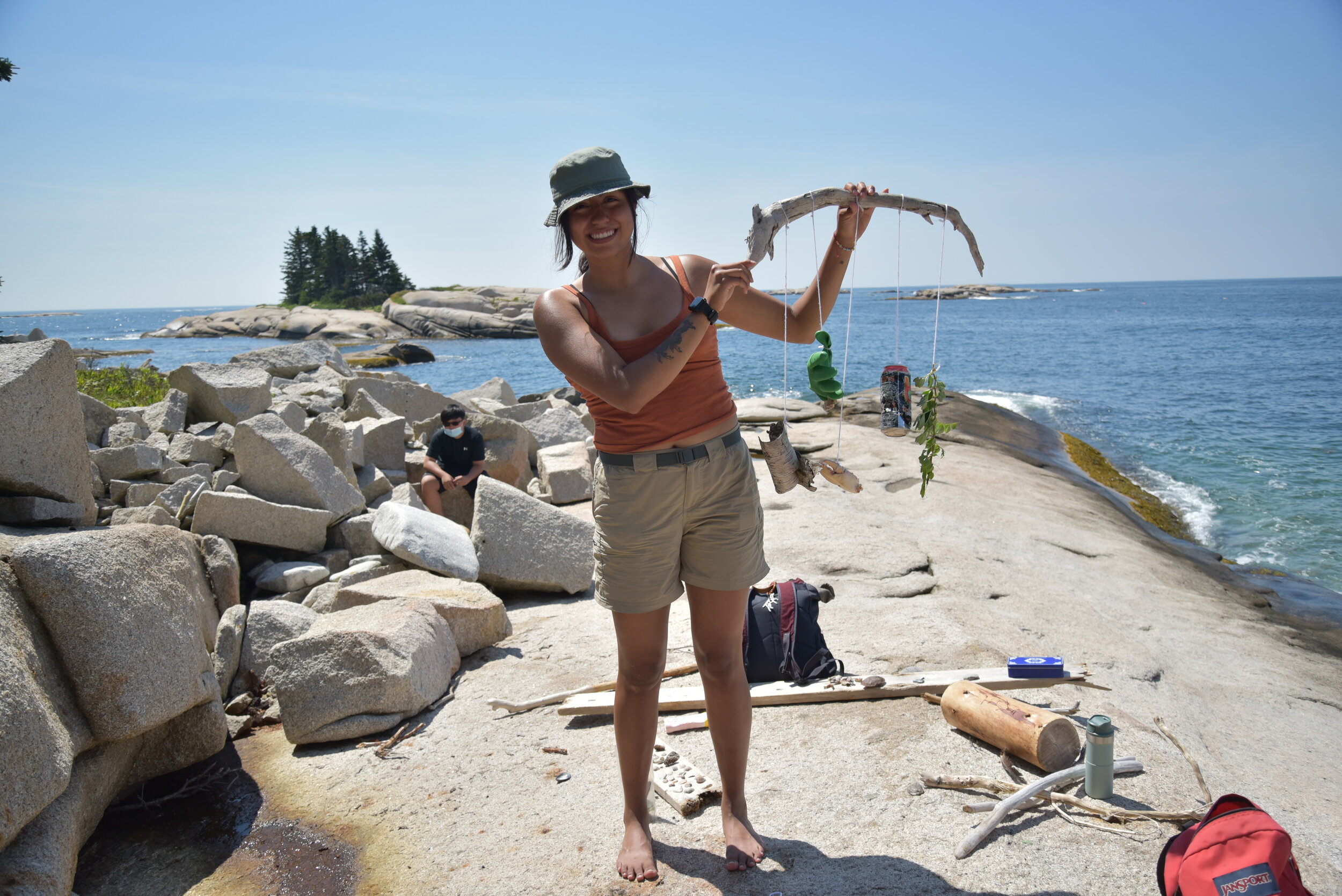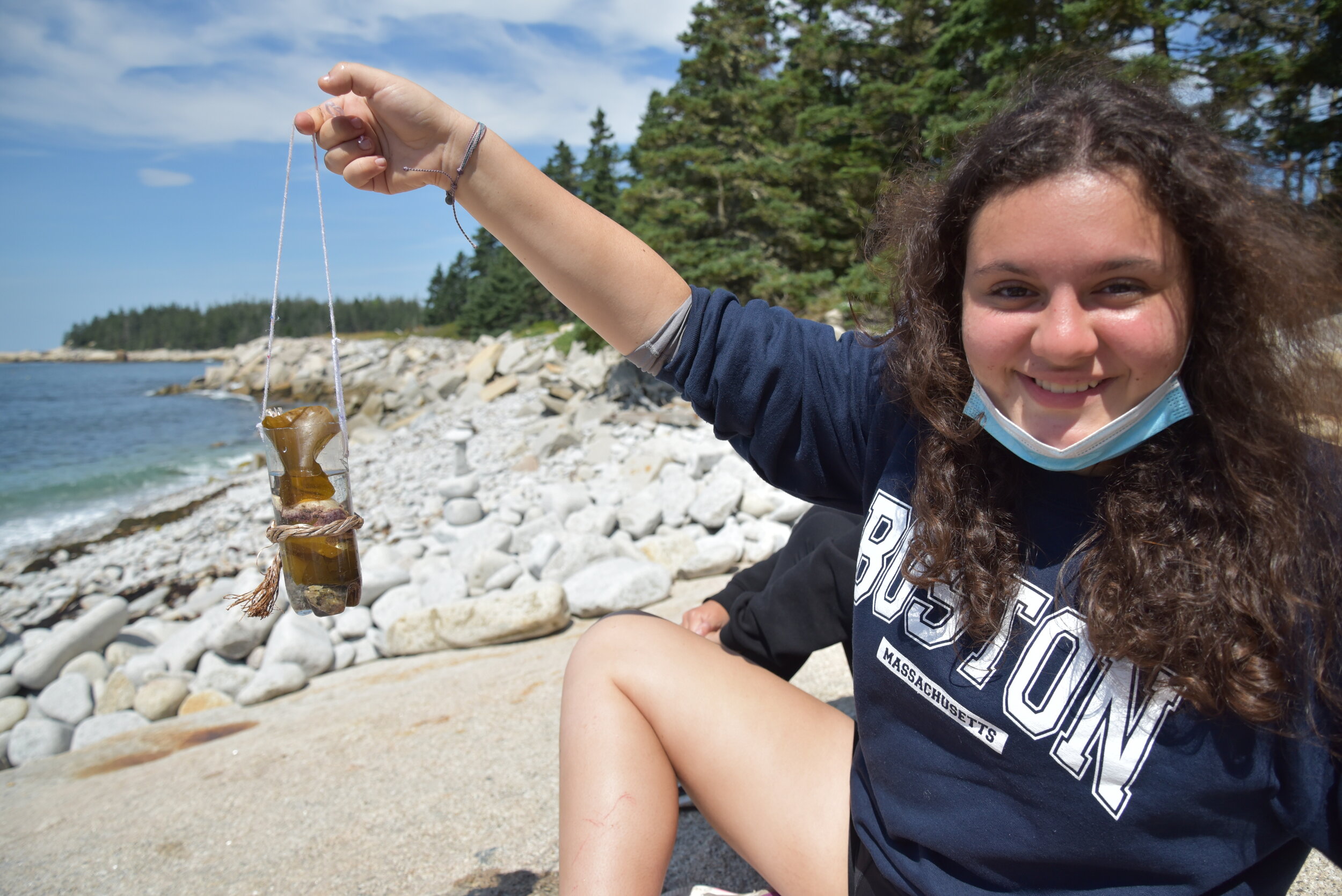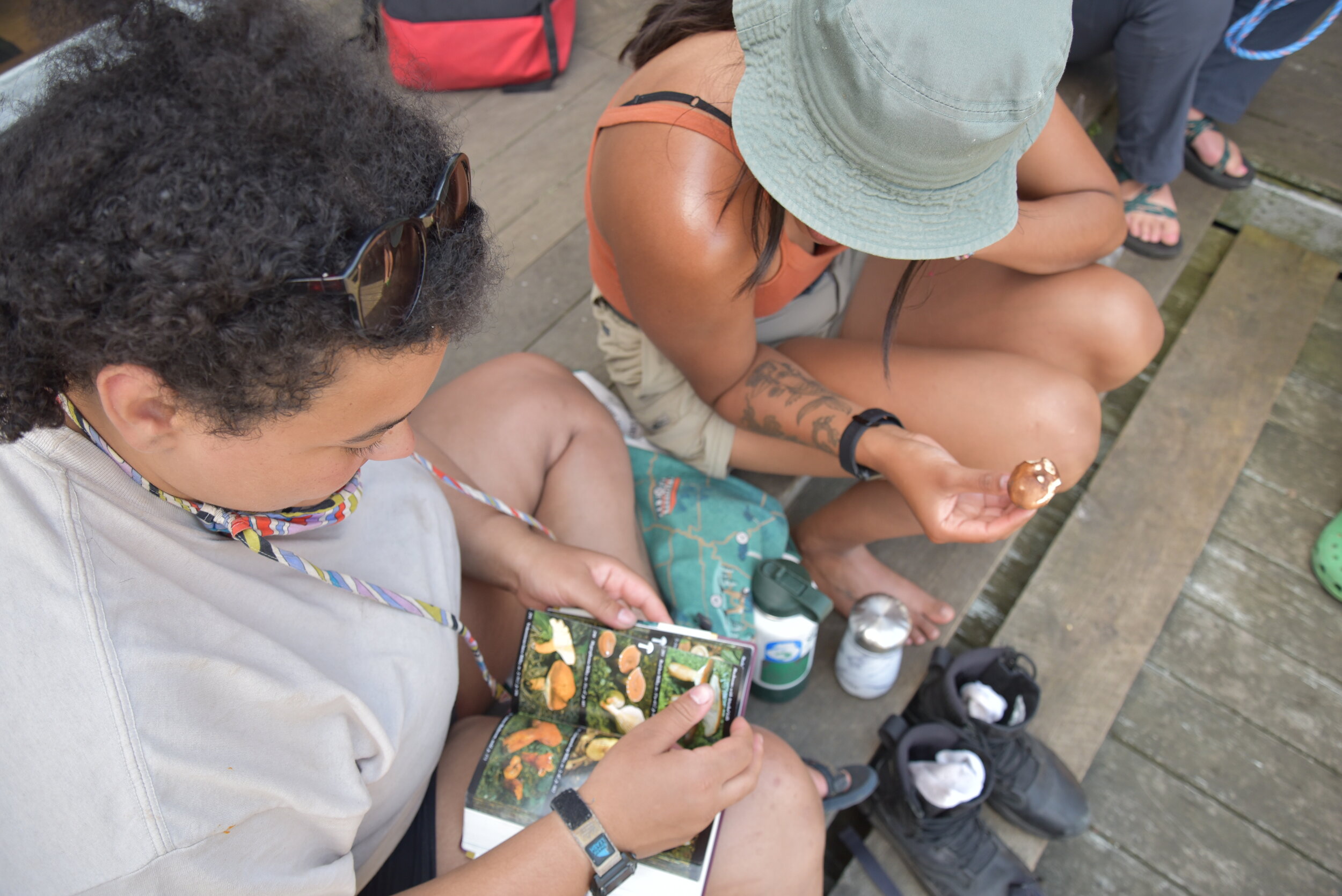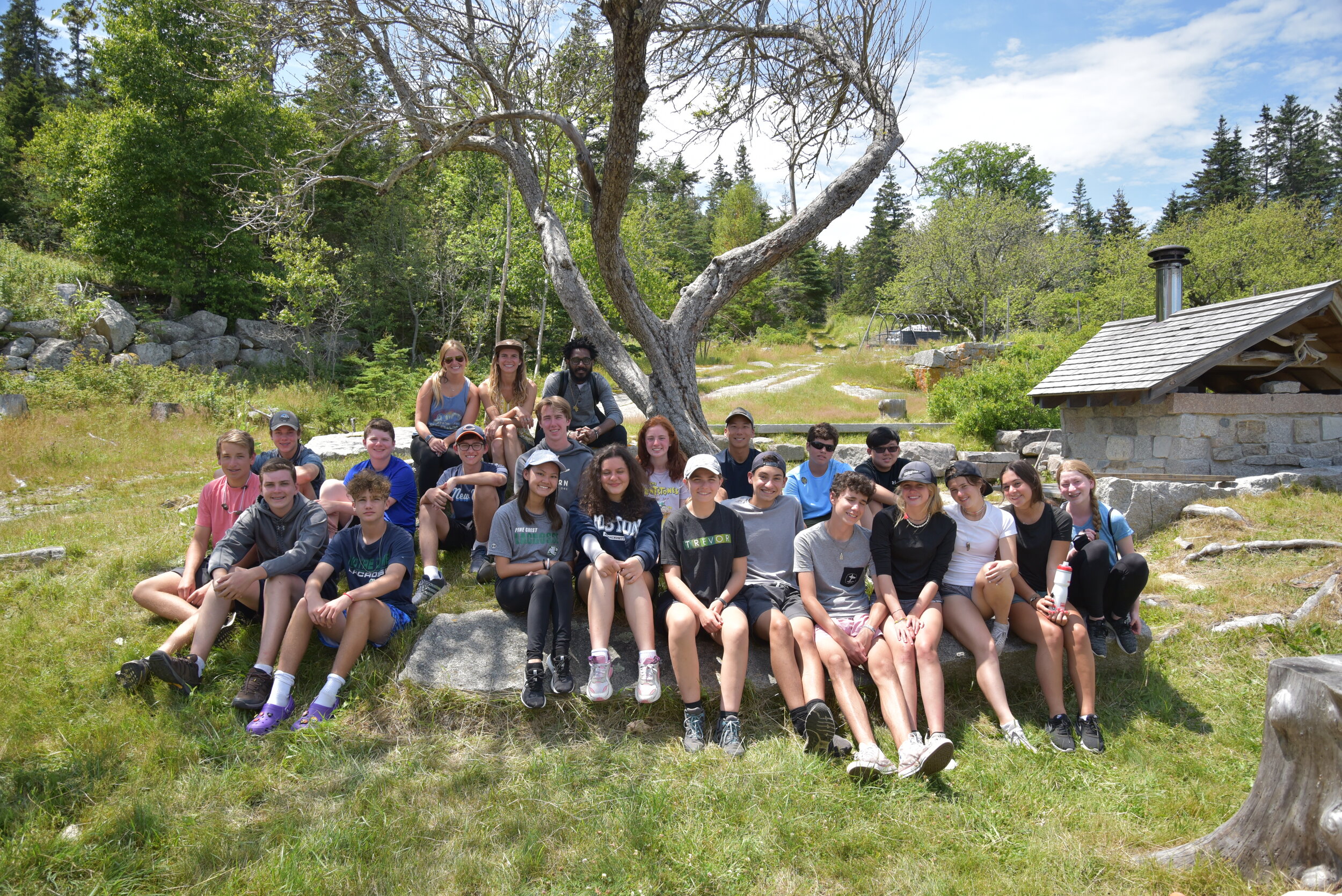Written by Summer Educator Keila Flores
Maine greeted the Westcoast Connection group with her skies full of rain, showering the students as they huddled together on the deck of the Equinox. The rocky figure of Hurricane Island came into view at last, and the group eagerly shuffled off of the boat and onto the float. Hurricane Island staff rushed to greet them, exchanging smiles and hellos.
Unlike a lot of groups that come to Hurricane Island, this group had first met when they made their way from Boston to Rockland. Westcoast Connection is an organization that takes students on service trips where they are able to serve different communities while traveling and learning. The students cautiously mingled as they made their way onto land, almost as new to each as they were with this strange little island. After the students nested into their respective cabins, yurts, and bunks and devoured a filling meal created by our cook Phillip, they were whisked away on a sunset hike. The students were led up a winding path, scattered with waves of soft green moss, orange pine needles that quieted their footsteps, and lined with tall Spruce trees dripping with lichen. The trail ended at Sunset Rock, an outlook that is perfect for watching the sun dip behind the horizon. The group sat back and relaxed, taking in the sky together as it changed from blue, to shades of pink and orange.
The eight days that Westcoast spent on the island were full of activities, service projects, games, hikes, and random naps on warm rocks. If you were to be in the vicinity of the mess hall while students were congregating there, you were bound to hear laughter, the shuffling of playing cards, or the strum of a ukulele. Since the island provides us with such a beautiful home, we too must give back to her. Trails and campgrounds were cleared of sticks and twigs, the garden was weeded to perfection, marine debris was picked up off the shore, and some old tent platforms were demolished. Each day spent on Hurricane made the students braver. Students who had previously refused to swim were excited to do pier jumping. I witnessed one student ask if the kelp he found was edible. When he found out it was, he shoved it into his pocket and munched on it periodically throughout the rest of the lesson. The story goes that this same student later found a nice sized invasive green crab along the intertidal pools and took a nice bite out of it.
As the students gathered on the dock of the Equinox to set off for their next adventure, their demeanors were night and day from when they had first arrived. The boat was full of smiles and conversation, some students already planning on their first reunion. The staff hummed a goodbye tune as the boat was untied and drove away from the island.
